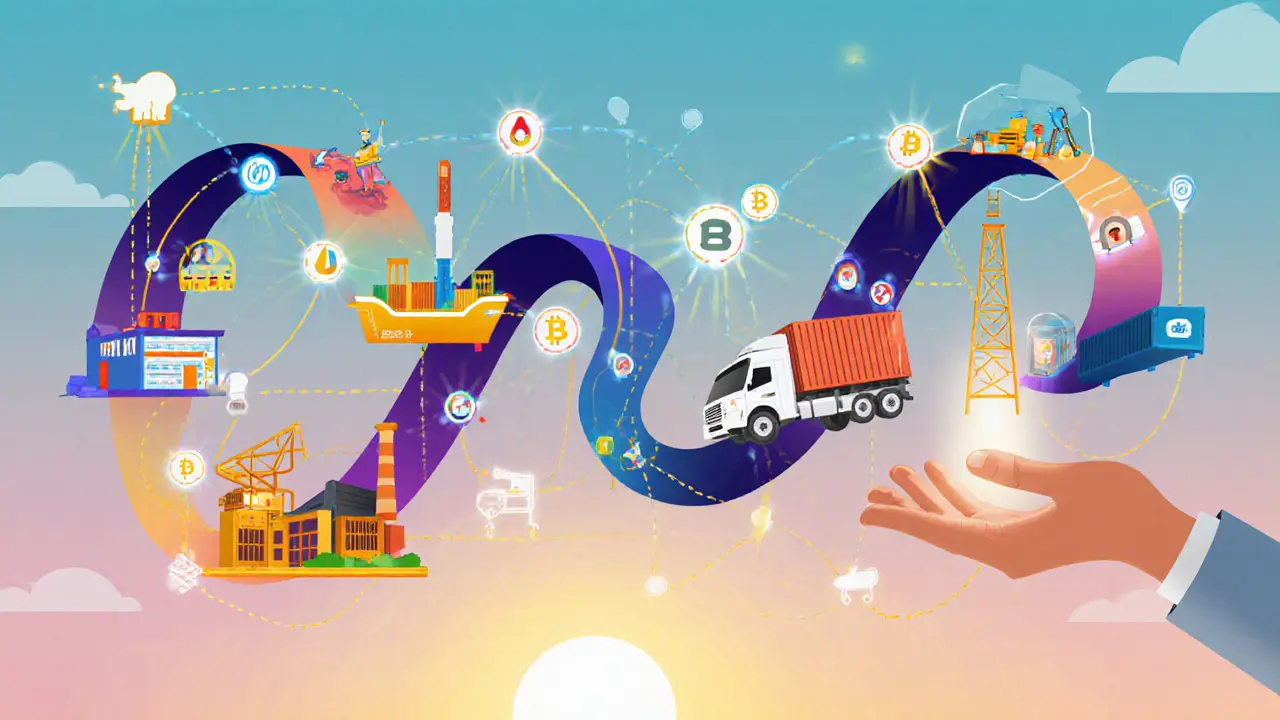Blockchain Supply Chain: How Distributed Ledgers Transform Logistics
When working with blockchain supply chain, a system that records every product movement on an immutable ledger. Also known as digital supply chain ledger, it enables real‑time visibility and fraud resistance. This technology relies on smart contracts, self‑executing code that enforces agreed rules without intermediaries, tokenization, the conversion of assets into digital tokens for easier tracking and often integrates IoT devices, sensors that feed real‑world data into the ledger. Together they boost traceability, the ability to follow a product’s journey from raw material to consumer and improve logistics efficiency.
Why a Blockchain‑Powered Supply Chain Matters
Imagine buying a bag of coffee and instantly seeing where each bean was grown, harvested, processed, and shipped. That level of transparency cuts counterfeit risk, lets regulators verify compliance, and gives consumers confidence. Companies that adopt this approach report up to 30% lower recall costs because issues are pinpointed instantly. The blockchain supply chain also trims middle‑man fees, because smart contracts settle payments the moment conditions are met. In short, you trade a tangled paper trail for a single, tamper‑proof record.
Smart contracts are the engine that turns data into action. When a sensor confirms a temperature drop during transport, a contract can automatically release a penalty payment or trigger an alert. This automation removes manual paperwork and speeds up dispute resolution. For example, a perishable‑goods exporter used a contract to auto‑refund a retailer if cargo stayed above 5 °C for more than two hours, saving both parties time and money.
Tokenization adds another layer of utility. By representing each container, pallet, or even a single component as a digital token, firms can trade ownership instantly on a secondary market. A manufacturer can fractionalize a high‑value machine, sell token shares to suppliers, and track each share’s usage in real time. This creates new financing models and reduces capital lock‑up.
IoT devices are the eyes and ears feeding the blockchain. GPS trackers, RFID tags, and environmental sensors publish timestamps, location coordinates, and condition data directly to the ledger. Because the data is immutable, auditors trust it without needing to inspect every crate. In a recent pilot, a logistics provider linked temperature and humidity sensors to a blockchain, cutting compliance audit time from days to minutes.
Traceability becomes more than a buzzword when every event is recorded on a shared, verifiable platform. Pharmaceutical companies, for instance, can prove a drug’s origin, preventing counterfeit pills from entering the market. Food producers can pinpoint the exact farm responsible for a contamination event, limiting the scope of recalls. This level of detail builds brand trust and satisfies stricter regulatory requirements.
Despite the gains, challenges remain. Scaling a public ledger to handle millions of daily sensor readings can be costly, so many projects adopt permissioned blockchains that balance speed with security. Data privacy is another concern; firms must decide what information stays on‑chain versus off‑chain. Interoperability standards are still evolving, making it hard to connect legacy ERP systems with new blockchain layers.
Financial institutions are already paving the way. A 2025 report on blockchain adoption in banks highlights how ledger technology streamlines trade finance, reducing transaction times from weeks to hours. Those same banks are experimenting with supply‑chain finance, issuing digital letters of credit that update automatically as goods move. The crossover shows that lessons from finance can accelerate supply‑chain innovation.
Looking ahead, sustainability goals are driving new use cases. By attaching carbon‑offset tokens to each shipment, companies can transparently report emissions and reward greener routes. Governments are also drafting regulations that may require proof‑of‑origin data for high‑risk goods, making blockchain‑based traceability a competitive advantage.
Below you’ll find a curated set of guides, reviews, and case studies that dive deeper into each of these topics. Whether you’re just curious about the basics or ready to pilot a blockchain solution, the articles ahead cover the practical steps, tools, and real‑world examples you need to move forward.
Supply Chain Blockchain Use Cases: Real-World Examples and Benefits
Explore real-world blockchain use cases in supply chains, from food safety to luxury goods, and learn how transparency, smart contracts, and tokenization boost efficiency.





